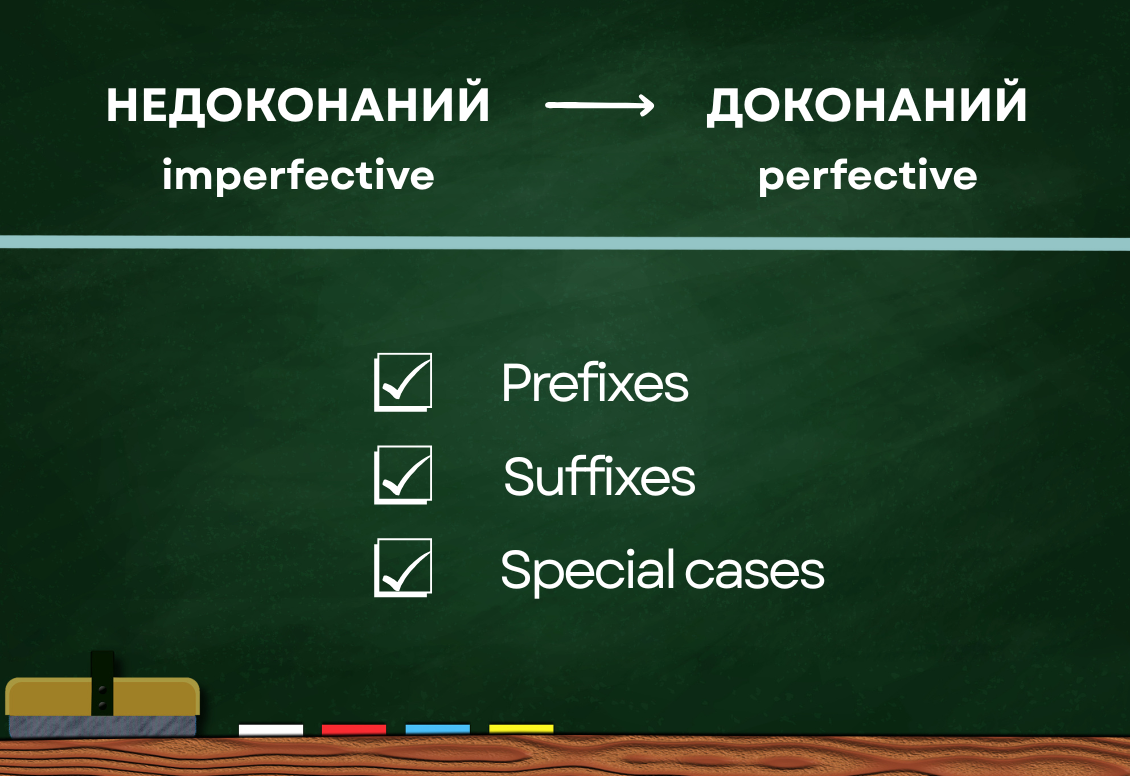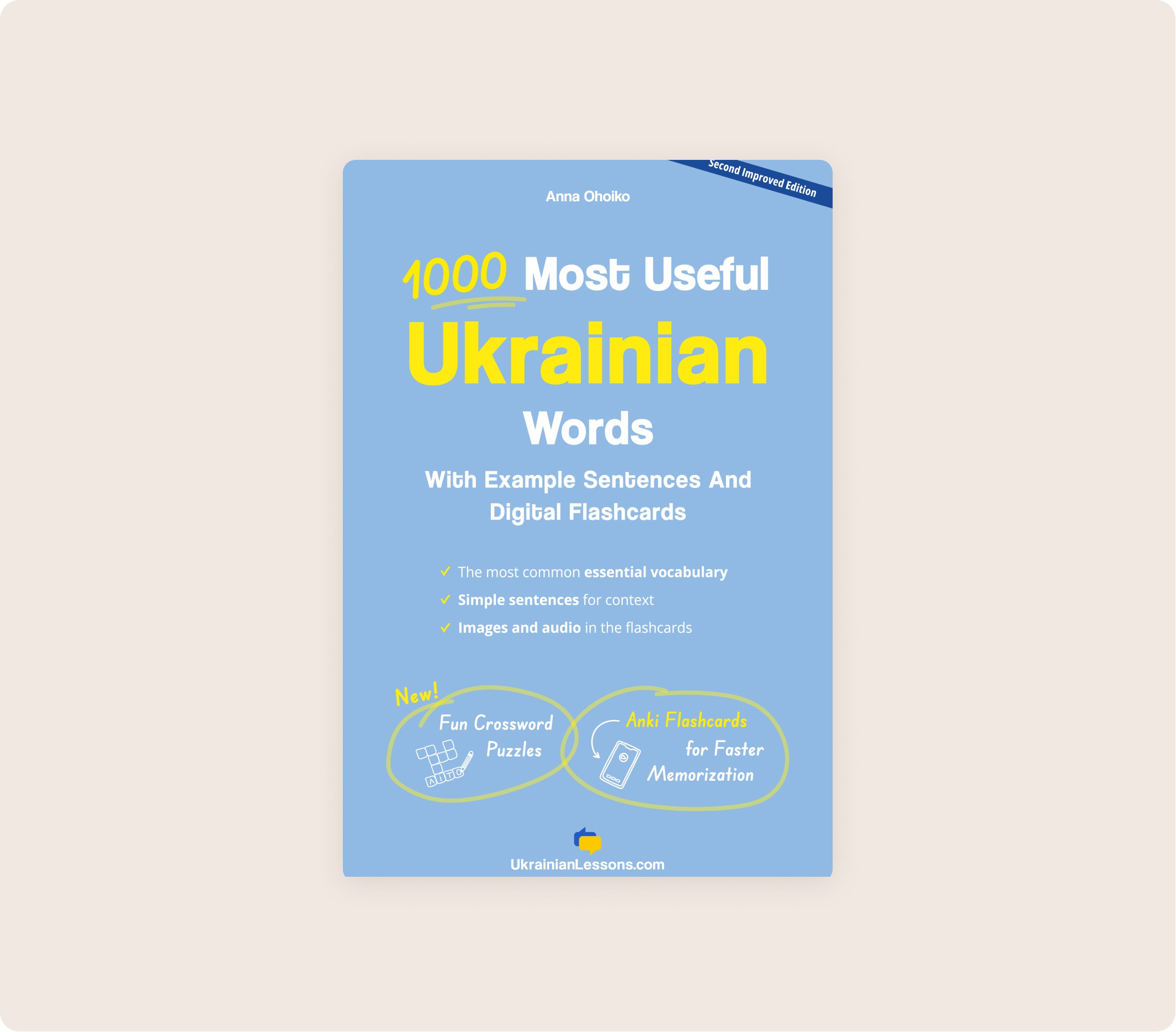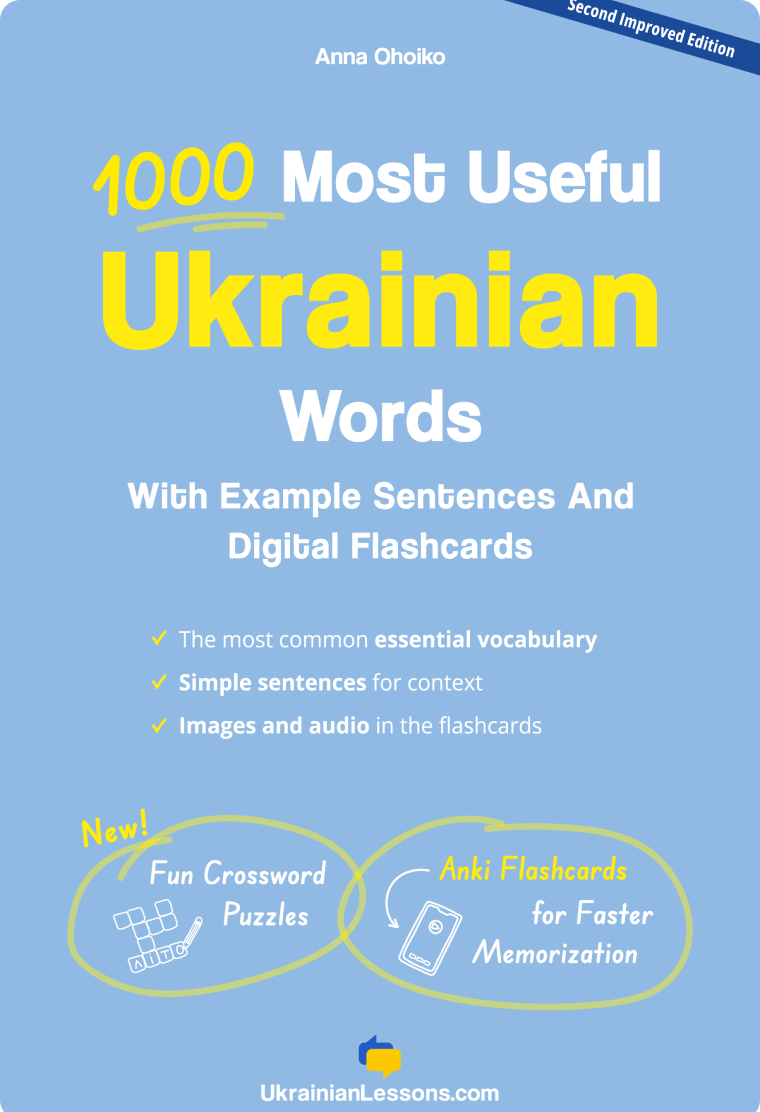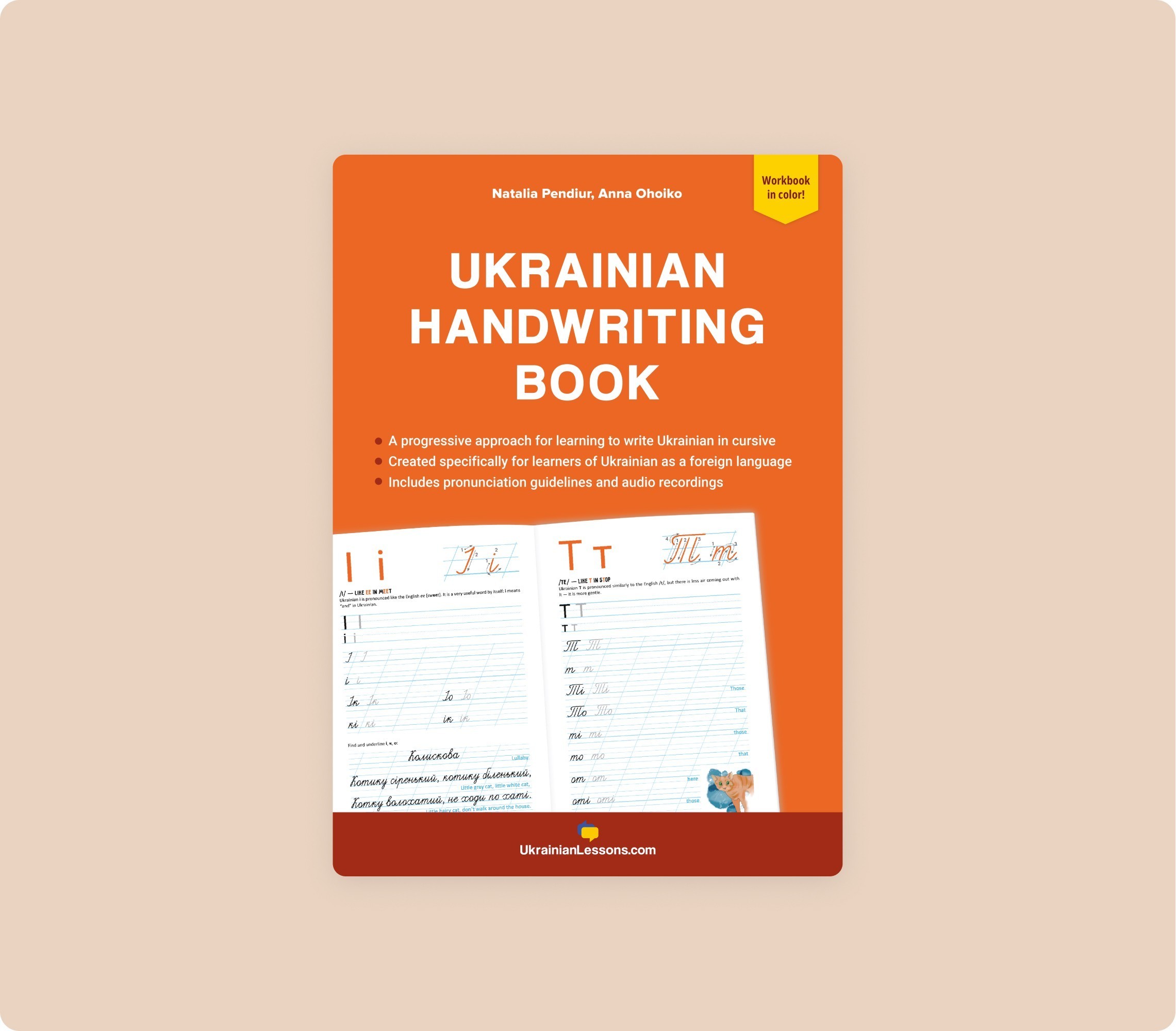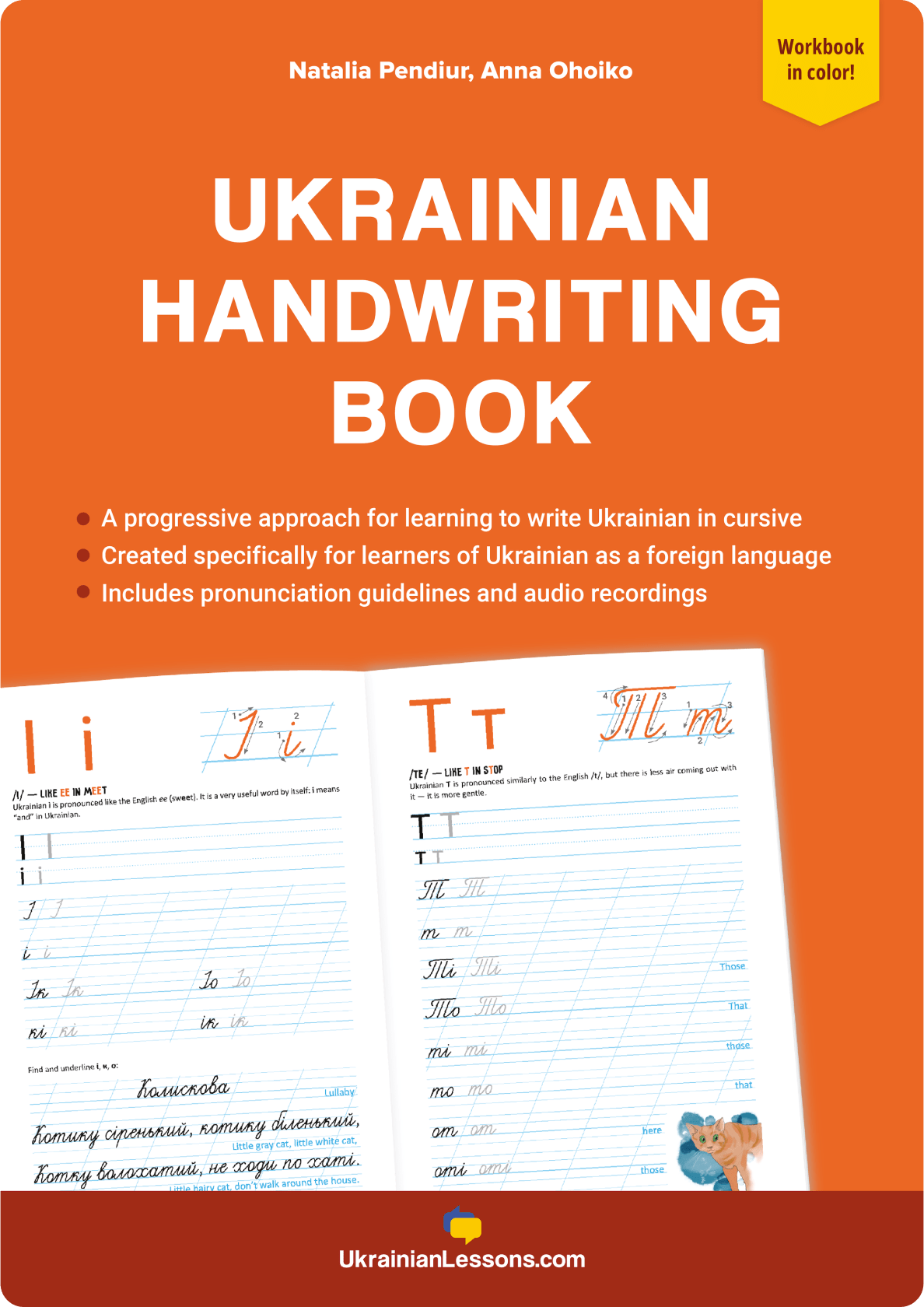Understanding how to form the perfective aspect in Ukrainian is essential for expressing completed actions or actions with a result.
First things first: what is the verb aspect ― вид дієслова? It is a special verb characteristic that tells if an action is incomplete or complete, regular or one-time. So, each Ukrainian verb belongs to недоконаний вид (imperfective aspect) or доконаний вид (perfective aspect).
What is the difference between imperfective and perfective verbs? How are they used in different tenses? We covered this topic in detail in another blog post with a free reference table: Verb Aspect in Ukrainian: Differences Between Imperfective and Perfective.
Luckily, there are predictable patterns that make it easier to recognize and form perfective verbs in Ukrainian. Whether it’s adding a prefix, changing a suffix or vowel, shifting stress, or even using a completely different word ― there are some consistent patterns that learners can pick up with practice.
Our guide covers the most common ways to form perfective verbs in Ukrainian, illustrated with practical examples. Feel free to save our tables and images for future reference!
Want to take your understanding of perfective verbs even further? Check out our 500+ Ukrainian Verbs book. It features an entire chapter dedicated to aspect and each of the 500 most common verbs is presented with its perfective counterpart.
How to Form Perfective Verbs in Ukrainian: Adding a Prefix
The easiest way to form perfective verbs in Ukrainian is by adding prefixes. When you see a Ukrainian verb with a prefix, it often indicates the perfective form, though this is not always the case.
To quickly recognize and correctly form perfective verbs in Ukrainian, it’s a good idea to become familiar with these prefixes. Take a look at the table below to get acquainted with the most frequently used prefixes that help form perfective verbs in Ukrainian.

How to Form Perfective Verbs in Ukrainian: Internal Changes
The most common way to form perfective verbs in Ukrainian is by making internal changes to the verb. This means something changes inside the word, usually in the middle — not at the beginning like with prefixes.
These internal changes often involve:
- Changing or dropping a suffix (the ending part of the verb)
- Changing a vowel (like и becoming е, or а disappearing)
These patterns may seem confusing at first, but they often appear and will become easier with practice and exposure. The table below shows useful examples of how to form perfective verbs in Ukrainian by changing a suffix or a vowel.
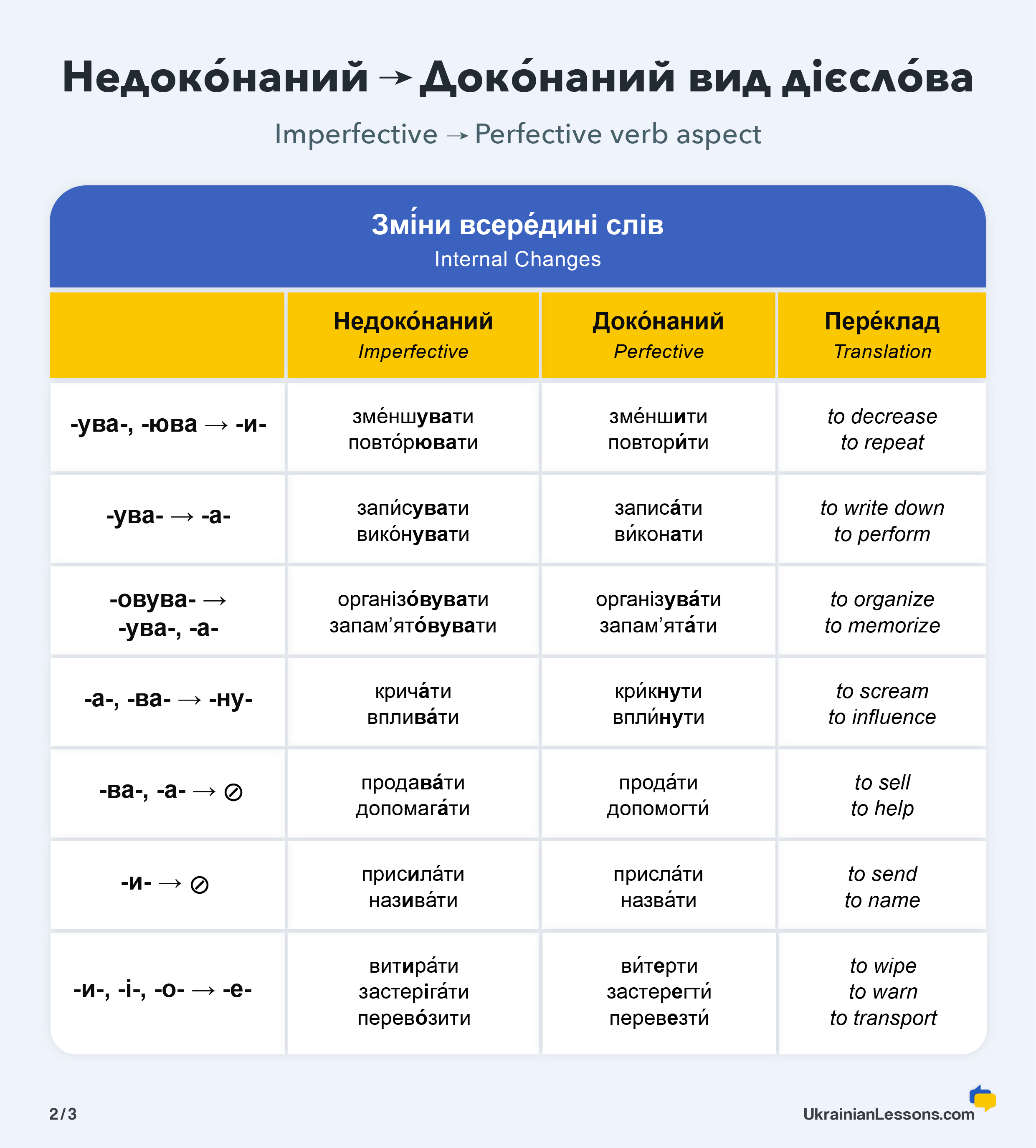
How to Form Perfective Verbs in Ukrainian: Special Cases
The last way to form perfective verbs in Ukrainian involves a few unusual patterns. These don’t rely on prefixes, suffixes, or vowel changes — but instead:
- A shift in stress
- A completely different word
- Or even no change at all!
These special cases might surprise you, but don’t worry — there aren’t that many. You can probably count them on your fingers (and toes for advanced level). Just focus on learning the specific examples below so you can recognize and use them when they come up.
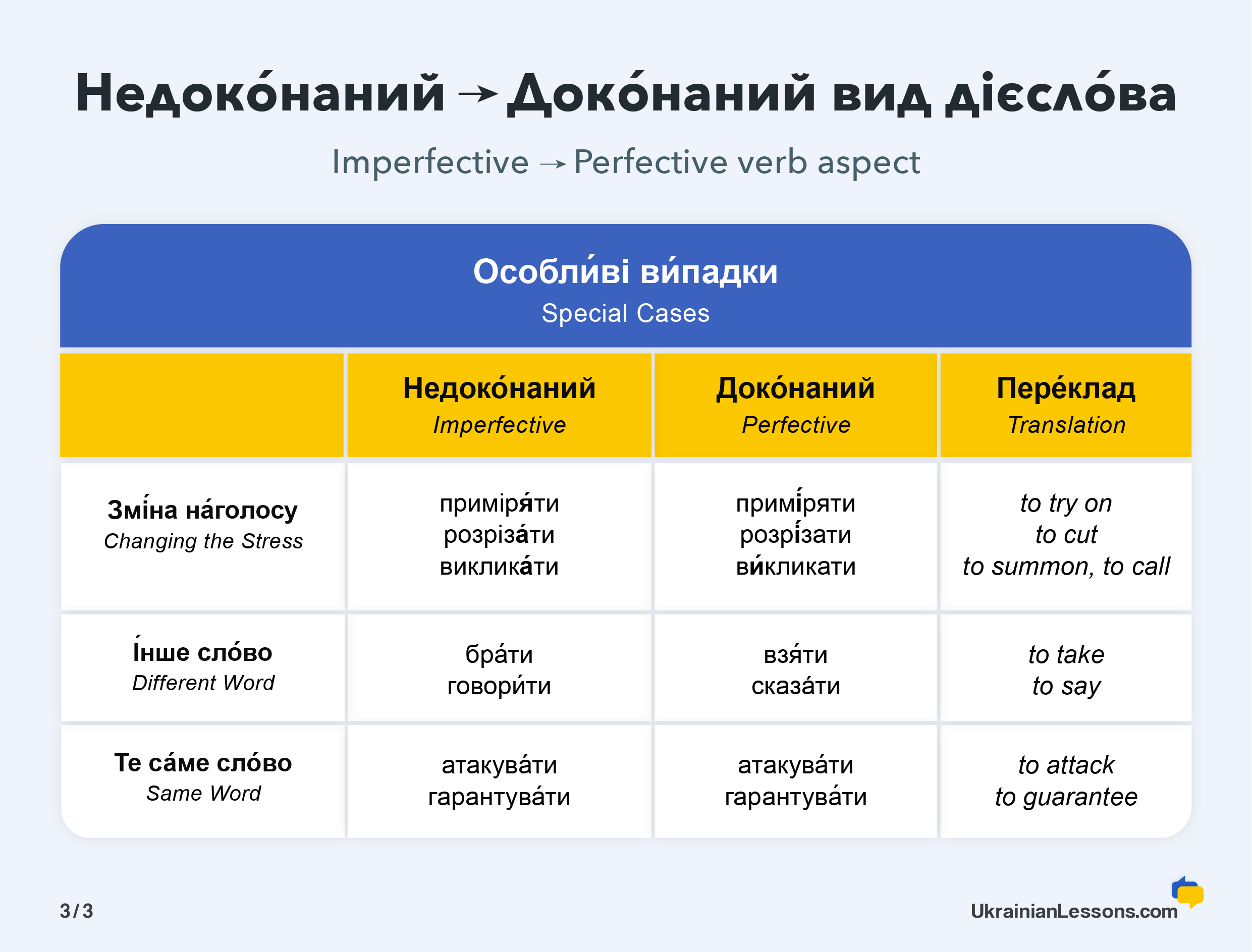
Ready to Learn More?
You’ve just explored the main ways to form perfective verbs in Ukrainian — from prefixes and suffixes to vowel changes and special cases. While grammar tables are helpful, the real magic happens when you hear these verbs in action!
🎧 Want to take it further?
Check out our podcast episodes about Ukrainian verbs, where we present verbs in real-life contexts and everyday conversations. It’s a fun, natural way to boost your skills and get used to how verbs work in actual speech.
📘 Looking for the ultimate resource on Ukrainian verbs?
Don’t miss our 500+ Ukrainian Verbs book! It covers everything you need to know — verb aspect, tenses, moods (like the imperative and conditional), and, of course, more than 500 most common Ukrainian verbs. Each verb comes with full conjugation tables and learner-friendly example sentences crafted specifically to help you use them in real life.
Make sure to check it out — it’s your all-in-one guide to mastering Ukrainian verbs!
